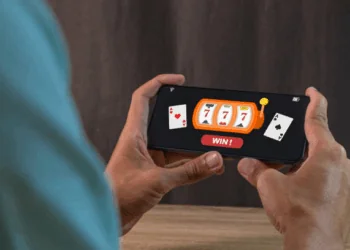The Business Behind the Clinic
Medical aesthetics occupies a space between medicine and lifestyle. Patients see procedures that change how they look, but behind that treatment room sits an industry built on regulation, supply, and training. What happens in a single session depends on a chain of steps that reach far outside the clinic walls.
A clinic cannot run without access to the right products. Fillers, injectables, threads, and lasers all arrive from licensed distributors, not from local shelves. These items move through ports, storage facilities, and inspection points before reaching the practitioner’s desk. Each stage is watched by regulators because one weak link could put patients at risk. This structure explains why clinics spend time choosing suppliers as carefully as they choose staff.
The financial side links directly to these operations. Treatments require materials that are costly, so pricing must cover not only staff salaries but also supply contracts and the machines themselves. Few procedures are permanent, which means patients return on a cycle. A filler fades, a laser needs repetition, a toxin wears off. That rhythm becomes the business model. Clinics rely less on single visits and more on long-term patient relationships.
Relationships form the core of retention. A patient who feels understood in one consultation is more likely to return. Each new appointment builds trust, and trust builds loyalty. Without it, advertising cannot keep the seats filled. The business survives not by pulling in strangers once but by turning them into familiar faces who come back again and again.
Knowledge, Devices, and Constant Change
The demands of this field do not end with medical school. Every new filler or laser comes with training programs run by manufacturers or distributors. Clinics send staff to these sessions because rules change often and procedures carry risks if performed incorrectly. Staff do not only learn how to use tools but also how to respond when something goes wrong. This constant learning shapes the daily rhythm of the clinic.
Technology pushes that rhythm forward. Lasers arrive with new wavelengths, devices offer different approaches to skin treatment, and machines for body contouring compete for attention. Each innovation forces clinics to decide whether to invest or wait. Buying early could mean owning a machine that patients do not request. Waiting too long could send those patients elsewhere. The balance between risk and opportunity defines how clinics plan their budgets.
Even away from the treatment chair, technology plays a central role. Records are digital, linking each vial to each patient. Consent forms are stored in secure systems. Regulators expect a clinic to present these details if questions arise, so the infrastructure must be reliable. Without it, compliance becomes impossible. Digital tools may not attract patients directly, but they keep clinics operational and legally safe.
Training never stops because regulations never stay still. New studies bring new rules. Professional associations issue updated guidelines. Staff attend workshops not only to learn new techniques but also to keep licenses valid. This is why education is seen as a running cost, not an optional extra. The clinic’s credibility rests on it.
The Patient Path
What the patient sees begins at consultation. A client arrives with a request shaped by media, by peers, or by their own reflection. The practitioner listens, then explains what can be done safely. Sometimes the answer is yes, sometimes no, but the conversation is more than medical advice. It sets the foundation for trust.
Once treatment is scheduled, the patient enters a room designed for sterility. Chairs, trays, gloves, and single-use vials mark the difference between a beauty salon and a clinical service. Every item used is recorded. Authorities can inspect at any time, so staff follow routines that are checked repeatedly. This discipline may feel invisible to the patient, yet it guarantees safety.
After treatment, recovery becomes the next stage. Some patients leave and return to work immediately. Others face swelling, redness, or mild discomfort that lasts for days. Because of this, many schedule procedures before weekends or holidays. The timing is not casual; it is built into how patients live their daily lives. Clinics adapt to this by offering flexible booking and explaining recovery needs in advance.
Follow-up sessions create the bridge between treatment and continuity. A filler may require a check two weeks later. A laser course may extend over several visits. Each return allows the practitioner to review results and maintain dialogue. Patients value this oversight because it signals care, while clinics use it to strengthen ongoing ties. In this way, the patient path feeds directly back into the business model described earlier: repeat visits, stable income, lasting trust.

Communication continues after the patient leaves. Questions arrive by phone or email. Images of recovery are shared for reassurance. Staff must respond quickly, because silence erodes trust. The connection between patient and clinic survives through dialogue as much as through treatment itself.
Supply and Regulation
None of this would function without supply chains. Every syringe, every glove, every vial arrives through regulated channels. A clinic that loses access to supplies cannot continue. This reality makes suppliers more than vendors; they are partners in survival.
Licensing protects that chain. Only registered distributors can import and sell. Counterfeit products remain a risk in global trade, so clinics choose trusted partners. A reliable distributor does not only provide items but also training, technical advice, and regulatory updates. One example is medical and aesthetic supplies offered through certified networks that secure both quality and compliance. Such links keep clinics confident that what they use meets the standards required by law.
Rules shift across borders. In one region, nurses may inject. In another, only doctors may act. Some products pass approval in one market while banned in another. Clinics adapt constantly, changing staff roles or limiting product use according to local law. Compliance is not static; it is a moving target.
Documentation underpins compliance. Every vial has a batch number. Each consent form carries signatures. Patient files link directly to these details. Inspectors may ask for them at any moment, and clinics must produce records instantly. Without proper storage of data, the entire service becomes vulnerable. Paperwork feels heavy, but it is the backbone of trust between patient, clinic, and authority.
Logistics add further challenges. Certain products require refrigeration through every step of transport. Delays at customs can spoil batches. Distributors invest in cold storage, tracking systems, and rapid shipping to reduce these risks. Clinics in turn rely on those distributors, because even a short supply gap can force cancellations. Patients may never think about these layers, but the success of their appointment depends on them.











